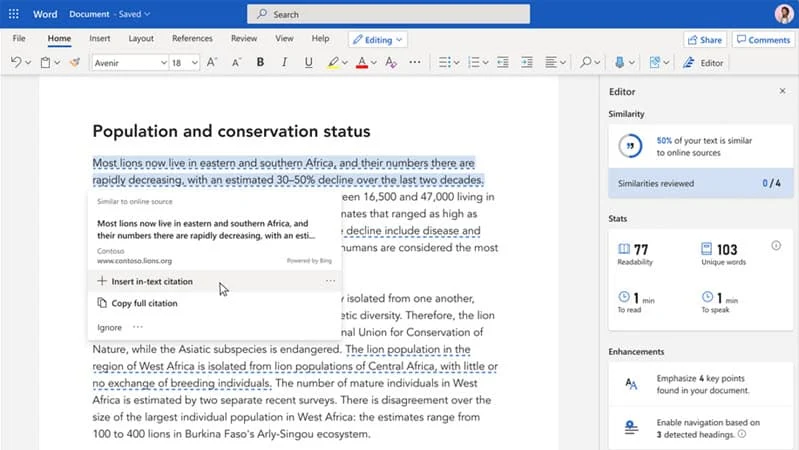In March 2020, Microsoft introduced an AI-powered intelligent writing assistant "Microsoft Editor", to help you write with confidence. Later, the company released extensions for Microsoft Edge and Chrome users to check spellings and grammar when you write on a web app.
Now the company added "Similarity Checker" for Microsoft Editor which will allow users to check if a block of text is copied from the internet and requires attribution.

Microsoft told that the feature is available in Microsoft Word for Microsoft 365 EDU A3, A5 customers, and is currently available to Office Insiders only as a preview. Microsoft plans to make the feature available to all customers in July 2020.
"Similarity checker", which is powered by Bing search, can identify and help writers with originality in their writing. It will also help users to add an in-text attribution if the text is copied from an internet source.
Eligible Microsoft 365 users can now follow the steps mentioned below to try out the Similarity Checker feature on Microsoft Word document:
- In Microsoft Word, click the Editor icon on the Home tab.
- In the Editor panel, click Check for similarity to online sources under the Similarity tab.
- Once the check completes, the Editor will show you how much of your content matches text that was copied from the internet.
- Click on Similarities reviewed to manually review each passage. The Editor will let you judge whether you want to insert a citation.
If you are using in-text citation, you will get an option to choose between MLA, APA, or Chicago citation style. Microsoft Editor places the citation immediately following the passage. After a passage has been reviewed, Editor underlines it in green. Clicking or tapping in the passage opens the citation suggestion again.





